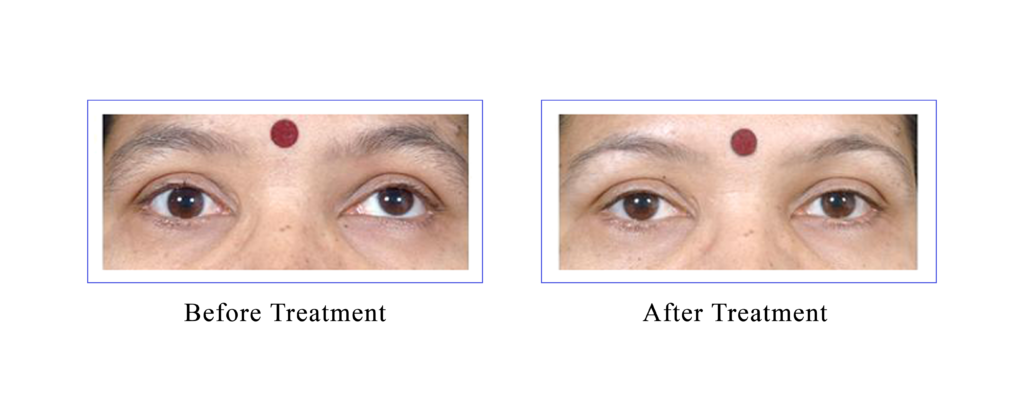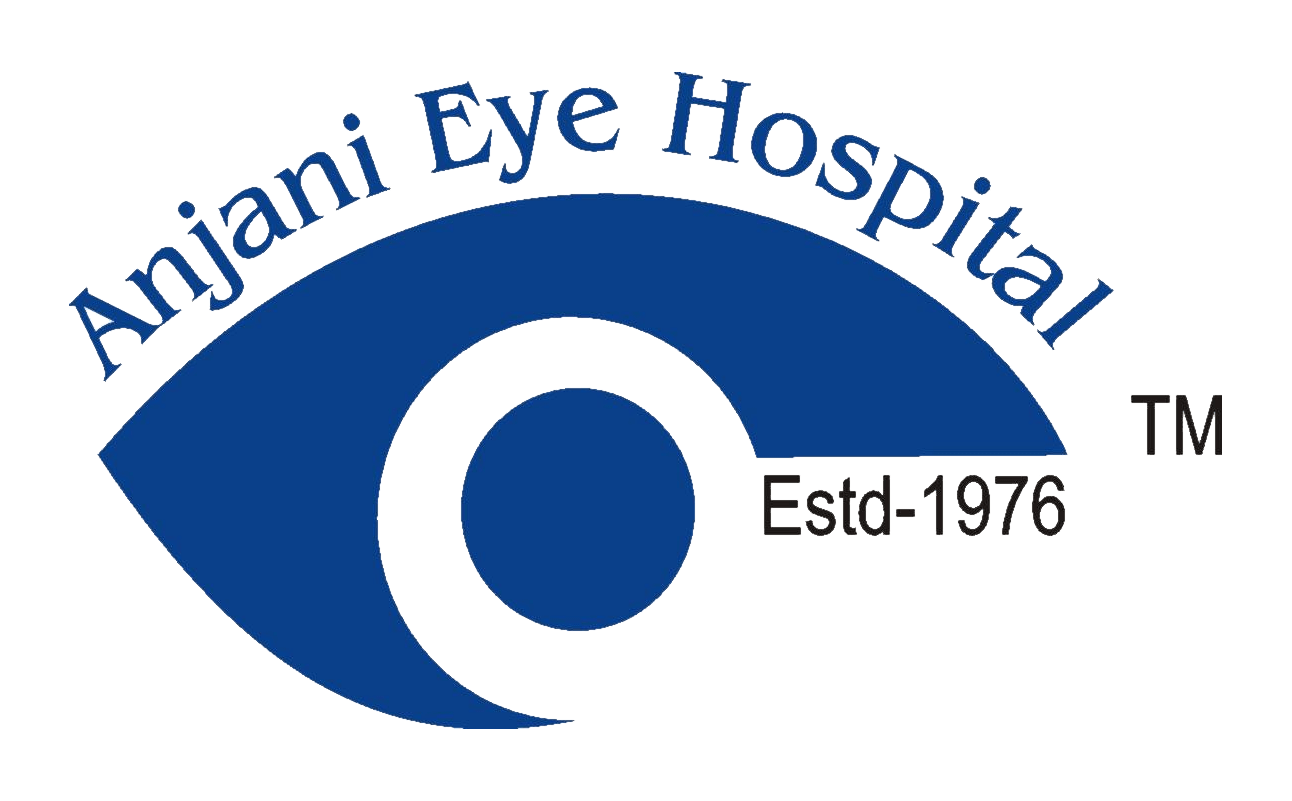What is Squint?
Squint is misalignment of the eyes such that the right and left eyes are pointed in different directions. Though it is a common condition among younger populations, affecting 2 to 4 percent of children, it may also appear later in life.
The misalignment may be permanent or it may be temporary, occurring occasionally. The deviation may be in any direction: inward, outward, upward or downward. If the child is not treated at the appropriate time, a condition called amblyopia occurs, which eventually leads to permanent loss of vision.

Squint may be caused by any of the following:
There are numerous causes for squint but in many cases the cause is not known. However, some of the factors which may cause squint are:
- Uncorrected long sight (hypermetropia / hyperopia) is the most common reason for an inward deviation / convergent squint.
- Weakened muscles or abnormal nerve impulses to the eye muscles may occasionally cause squinting of eyes.
- Blurred or poor vision due to cataract, corneal scars, glaucoma, refractive errors, optic nerve disease, retinal disease, tumors of the eye etc., can cause squinting.
- Heredity
- Premature babies, children with delayed milestones may sometimes be born with squint.
- Brain injury or brain tumors can really cause squint.

How is Squint treated?
Parents often get the false impression that a child may “outgrow” the problem. If a child’s two eyes are pointed in different directions, examination by an ophthalmologist is necessary to determine the cause and to begin treatment. The goals of treatment are to preserve vision, straighten the eyes and to restore binocular vision. Treatment of squint depends on the exact cause of the misaligned eyes. It can be directed towards unbalanced muscles or other conditions which are causing the eyes to point in two different directions. After a complete eye examination, including a detailed study of the inner parts of the eye, an ophthalmologist can recommend appropriate optical, medical or surgical therapy.
Signs and Symptoms
The primary sign of squint is an eye that is not straight. Sometimes, a youngster will squint or close one eye in bright sunlight. Faulty depth perception may be present. Some children turn their faces or tilt their heads in a specific direction in order to use their eyes together. The child sometimes experiences double vision or confusion.
How is Squint treated?
Parents often get the false impression that a child may “outgrow” the problem. If a child’s two eyes are pointed in different directions, examination by an ophthalmologist is necessary to determine the cause and to begin treatment. The goals of treatment are to preserve vision, straighten the eyes and to restore binocular vision. Treatment of squint depends on the exact cause of the misaligned eyes. It can be directed towards unbalanced muscles or other conditions which are causing the eyes to point in two different directions. After a complete eye examination, including a detailed study of the inner parts of the eye, an ophthalmologist can recommend appropriate optical, medical or surgical therapy.
Non-Surgical Treatment – Spectacles / Prisms
Some squints are caused by refractive errors (long sightedness, short sightedness and/or astigmatism). In such cases, squint can be corrected by prescribing proper spectacles. Wearing glasses helps in improvement of the child’s vision, reduce the amount of squinting of eyes and sometimes corrects it as well.
The developmental squint during childhood can give rise to poor vision in the squinting eye. In infants and young children the brain ignores what is seen by the squinting eye hampering the visual development of that eye. This gives rise to amblyopia or “lazy eye”. Patching of the normal seeing eye, can improve the vision of the squinting eye and may realign the eye to some extent. Your doctor may advise patching for the normal eye along with prescription glasses, if needed.
In some instances, prisms can be used to overcome double vision caused by squint. Prisms do not align the eyes like in case of surgery, but they can help the patient in bringing together 2 separated images and can relieve double vision.
Surgical Treatment
If the child needs glasses and/or patching treatment to improve his / her vision, it is important that this be done prior to surgery or before surgery is considered. Any other treatable eye condition (cataract, retinal detachment, glaucoma etc.), should also be treated before planning a surgical intervention. Surgery for squint helps to:
- Align the eyes in order to make them work together
- Strengthen binocular vision / 3-d vision / binocular cooperation
What is done in Squint Surgery?
Surgery is done under general anaesthesia in children and under local anaesthesia in cooperating adults.
- Routine investigations before surgery include a blood test and an X-ray of the chest. To undergo general anaesthesia the child should be free from acute illness. Parents should inform the doctor if the child is having any systemic problems such as cardiac disease or epilepsy.
- Surgery is done either on both eyes simultaneously or on one at a time. Surgery is done on eye muscles situated outside the eyeball and the eye is not opened.
- The principle of surgery is to weaken the stronger muscle and strengthen the weaker muscle. Either one or several muscles may be operated upon, depending on the type and severity of squint.
- As with any surgery, eye muscle surgery has certain risks, such as infection, bleeding, excessive scarring, over correction / under correction and very rarely complications leading to loss of vision. Sometimes (in case of under correction), further surgeries may be needed to keep the eyes straight.

Treatment does not stop with surgery. Glasses may have to be continued to maintain clarity of vision. Patching therapy may be needed to be continued for some time after the surgery.
Injections (are there any injections for Squint?)
An injection of Botulinum Toxin can be considered for some individuals as a temporary alternative to eye muscle surgery. Although the effect of the drug wear off after several weeks, sometimes the misalignment may get permanently corrected.


Treatment does not stop with surgery. Glasses may have to be continued to maintain clarity of vision. Patching therapy may be needed to be continued for some time after the surgery.
Routine investigations before surgery include a blood test and an X-ray of the chest.
-
Surgery is done either on both eyes simultaneously or on one at a time. Surgery is done on eye muscles situated outside the eyeball. The surgery is done on the white portion of the eyeball.
-
The eyeball is not opened.
-
The principle of surgery is to weaken the stronger muscle and strengthen the weaker muscle. Either one or several muscles may be operated upon, depending on the type and severity of squint.
-
Eye is bandaged for one day after surgery.
-
After surgery, eye drops are to be used for about one month.
-
Oral medication is not required except in a few cases.
-
Hospital stay is only for two days.
-
First follow-up visit will be one month after surgery.
-
If amblyopia is present frequent follow-up appointments for a longer duration are required.
-
It is unnecessary to restrain the normal activities of the child.
Squint is not a sign of good luck. It affects your child’s vision and appearance!
Loss of vision is preventable if squint is treated as early as 1 to 2 years of age.
As the child grows older, it becomes more difficult to treat squint and regain the lost vision.
However, cosmetically straightening the eyes is possible at any age
What is SQUINT?
Squint is misalignment of the eyes such that the right and left eyes are pointed in different directions. Though it is a common condition among younger populations, affecting 2 to 4 percent of children, it may also appear later in life. The misalignment may be permanent or it may be temporary, occurring occasionally. The deviation may be in any direction: inward, outward, upward or downward. If the child is not treated at the appropriate time, a condition called amblyopia occurs, which eventually leads to permanent loss of vision. Squint may be caused by any of the
following:
- Weakened muscles or abnormal nerve impulses to the eye muscles
- Heredity.
- Blurred or poor vision due to cataract, corneal scars, glaucoma, refractive errors, optic nerve disease, retinal disease, tumors of the eye etc.,
- Injuries.
- Pathology inside the eye, such as cataract.
Signs and Symptoms
The primary sign of squint is an eye that is not straight. Sometimes, a youngster will squint or close one eye in bright sunlight. Faulty depth perception may be present. Some children turn their faces or tilt their heads in a specific direction in order to use their eyes together. The child sometimes experiences double vision or confusion.
Treatment
Parents often get the false impression that a child may “outgrow” the problem. If a child’s two eyes are pointed in different directions, examination by an ophthalmologist is necessary to determine the cause and to begin treatment. The goals of treatment are to preserve vision, straighten the eyes and to restore binocular vision. Treatment of squint depends on the exact cause of the misaligned eyes. It can be directed towards unbalanced muscles or other conditions which are causing the eyes to point in two different directions. After a complete eye examination, including a detailed study of the inner parts of the eye, an ophthalmologist can recommend appropriate optical, medical or surgical therapy.

Non-surgical treatment - spectacles
Some squints are caused by refractive errors. In such cases, squint can be corrected by prescribing proper spectacles.
Surgical treatment

Pre operative Post operative Most patients require surgical correction. Surgery is done under general anaesthesia in children and under local anaesthesia in cooperating adults. To undergo general anaesthesia the child should be free from acute illness. Parents should inform the doctor if the child is having any systemic problems such as cardiac disease or epilepsy.
Routine investigations before surgery include a blood test and an X-ray of the chest.
- Surgery is done either on both eyes simultaneously or on one at a time. Surgery is done on eye muscles situated outside the eyeball. The surgery is done on the white portion of the eyeball.
- The eyeball is not opened.
- The principle of surgery is to weaken the stronger muscle and strengthen the weaker muscle. Either one or several muscles may be operated upon, depending on the type and severity of squint.
- Eye is bandaged for one day after surgery.
- After surgery, eye drops are to be used for about one month.
- Oral medication is not required except in a few cases.
- Hospital stay is only for two days.
- First follow-up visit will be one month after surgery.
- If amblyopia is present frequent follow-up appointments for a longer duration
are required. - It is unnecessary to restrain the normal activities of the child.
Treatment does not stop with surgery. Glasses may have to be continued to maintain clarity of vision. Patching therapy may be needed to be continued for some time after the surgery.
Squint is not a sign of good luck. It affects your child’s vision and appearance
» Loss of vision is preventable if squint is treated as early as 1 to 2 years of age.
» As the child grows older, it becomes more difficult to treat squint and regain the lost vision. However, cosmetically straightening the eye is possible at any age.

